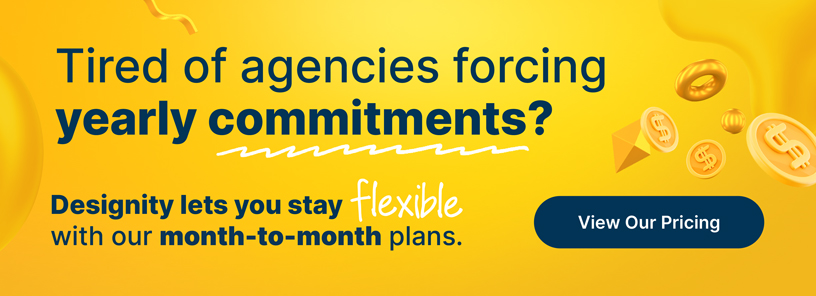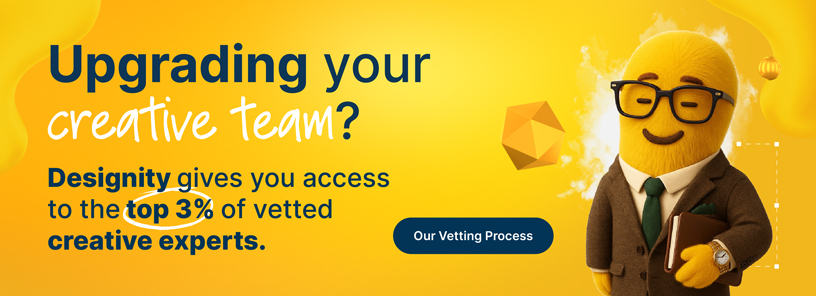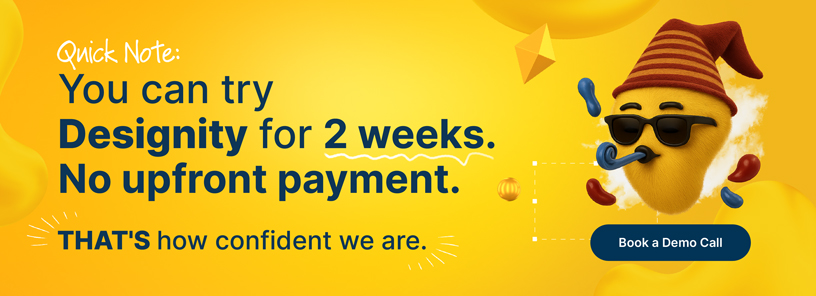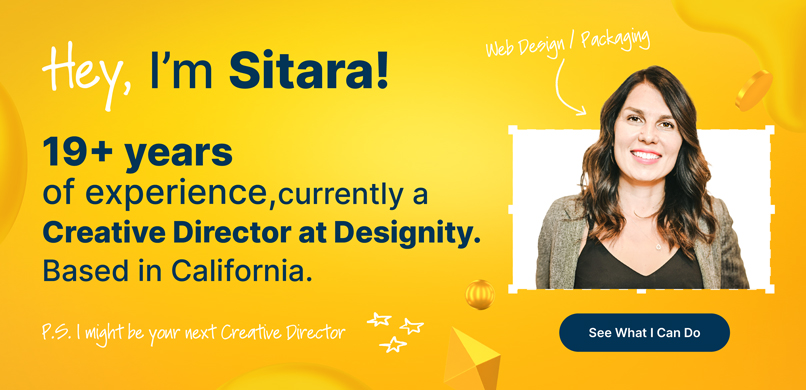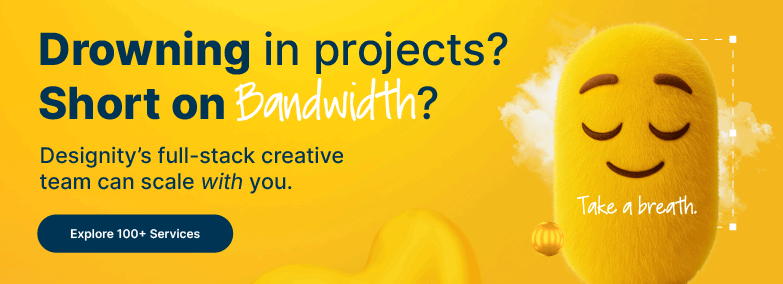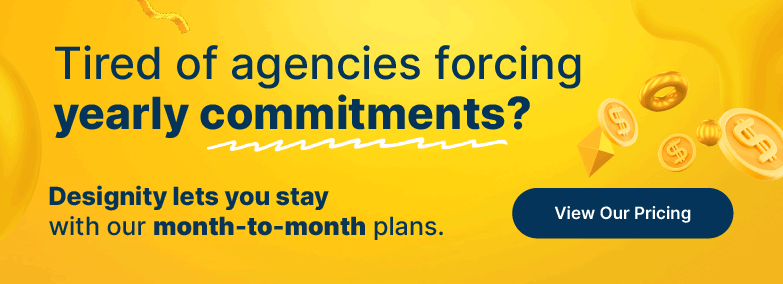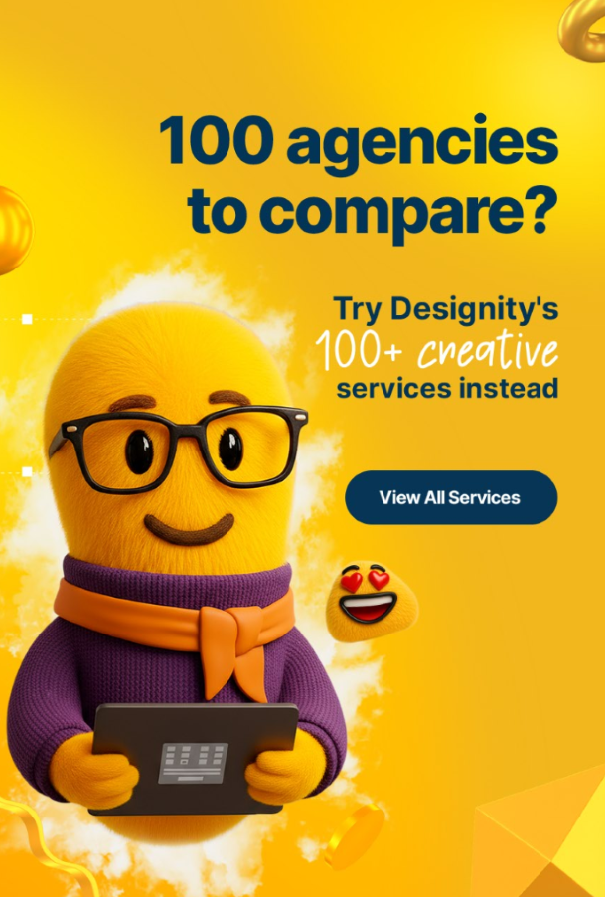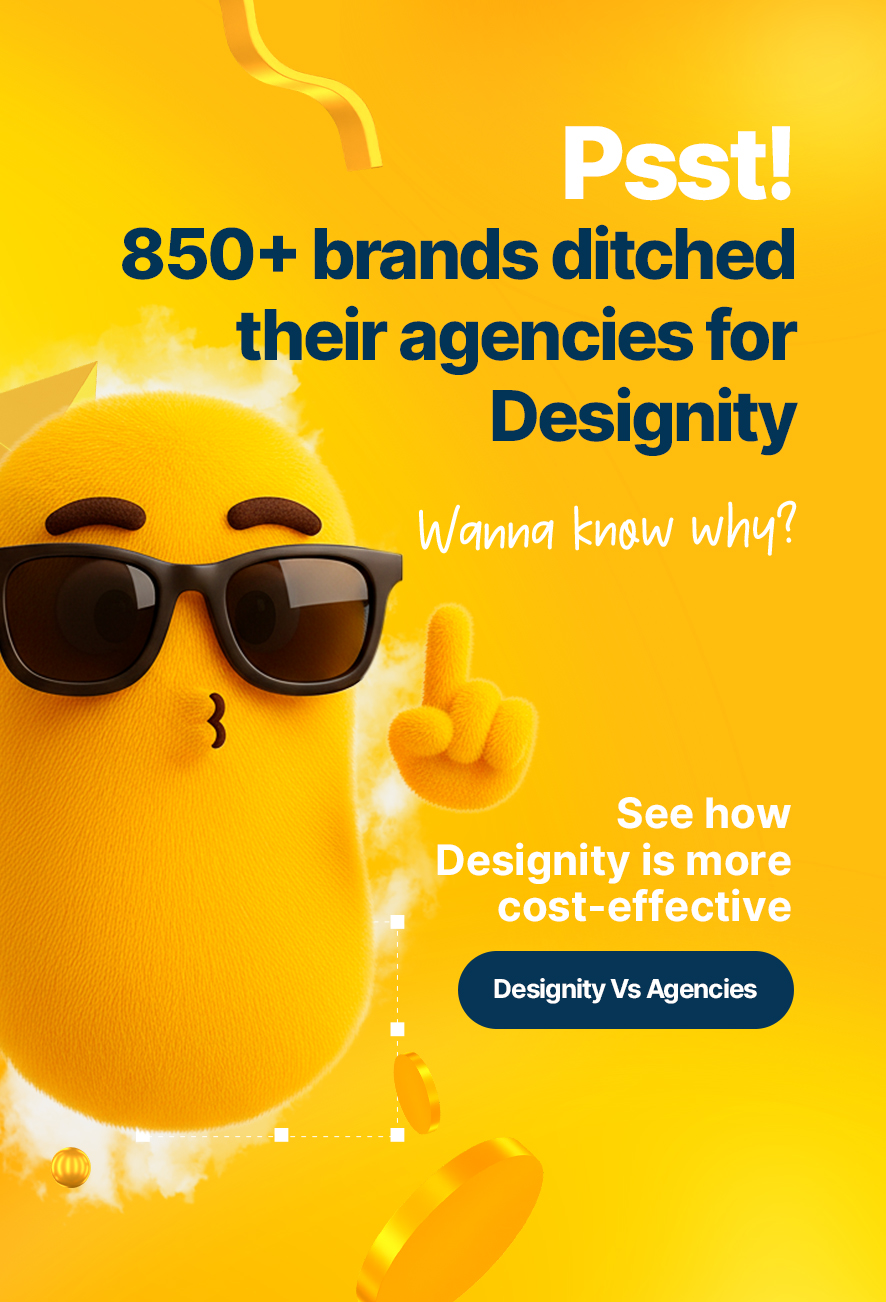So, you’ve got a software as a service (SaaS) product that you need to market.
The thing is, you’re not alone, friend!
No matter what industry you’re in, chances are that there are many other SaaS products on the market competing tooth and nail with yours. So, how do you stay one step ahead of the competition and keep acquiring and retaining the customers that you need for your product to achieve success?
You choose a winning marketing strategy, that’s how.
Today’s blog is your ultimate guide to SaaS strategies that you can start implementing today to help your brand not only survive but thrive in your industry!
Let’s find your pathway to success!
The Importance of Choosing the Right SaaS Marketing Strategy
Choosing the right strategy to market your SaaS product is crucial if you want your brand to succeed.
The right strategy allows your product to stand out, an extremely important thing in such a highly competitive market up against competitors that are offering products with similar features. Your strategy will set you apart from those competitors, ensure that your unique value proposition is communicated, that the most relevant audience segments are targeted, and that your resources and budget are allocated in a way that saves you time and money.
A well-crafted strategy also increases your brand’s visibility online, which brings in your customers and drives your overall growth and success.
In other words … the right strategy is everything!
30 SaaS Marketing Strategies to Try

And because the right strategy is so important, we’ve outlined 30 winning strategies to help you choose the right SaaS marketing approach and set your brand up for success.
Whether you’re looking to get more users into your sales funnel, improve customer retention, or just elevate your brand’s visibility, these 30 tactics are designed to give your campaign the fresh edge it needs!
1. Captivating SaaS Content Marketing
Content marketing is a cornerstone of SaaS marketing strategies.
Develop a comprehensive content strategy that includes a variety of content formats like entertaining blog posts, informative ebooks, infographics, videos, and more. Whatever content you choose, be sure it’s valuable and serves a purpose: either to educate, inform, or entertain your audience!
Here are some ideas:
- Blog Posts: Regularly publishing blog posts on topics related to your industry and SaaS product can help you showcase your expertise, provide valuable information to your customers, and attract organic traffic from search engines.
- Ebooks: Ebooks serve as in-depth resources that allow your customers to dive deep into specific topics related to your SaaS product. They can also be used as lead magnets to capture email addresses for future marketing efforts.
- Infographics: Infographics are visually engaging tools that can distill complex information into easy-to-understand graphics. They are highly shareable on social media and can be used to convey data and statistics.
- Videos: Video content, whether in the form of product demos, tutorials, or promotional videos, is an effective way to engage your audience and demonstrate how your SaaS solution addresses their needs.
2. Irresistible Free Trials
Offering free trials of your SaaS product is a powerful strategy that gives your potential customers a hands-on experience and just enough of a taste to keep them wanting more! It's crucial to make these trials irresistible by providing a seamless, feature-rich experience.
Things to focus on:
- Onboarding: Create a seamless onboarding process that guides users through your SaaS product's key features. The goal here is to help them understand the value of your product quickly!
- Value Communication: Be sure to clearly communicate the value of your SaaS product during the trial. Highlight how it can solve your customer’s pain points and improve their lives or businesses.
- Customer Service: Offer top-notch and responsive customer support during the trial period. Having a quick answer to any user inquiries can greatly influence a person’s decision to convert from free trial user to paying customer.
- Conversion Optimization: Implement strategies to convert trial users into paying customers. This can include in-app messages, email campaigns, and special offers that encourage them to subscribe!
3. Social Media Advertising
Harnessing the power of social media platforms like Facebook, Twitter, and LinkedIn for targeted advertising is a smart way to reach your potential customers. These platforms offer powerful advertising tools that allow you to reach your users based on demographics, interests, and behaviors.
Some key points to consider are:
- Audience Segmentation: Define your ideal customer profiles and create tailored ad campaigns to target them effectively. Social media platforms offer extensive audience segmentation options, so check your options and segment your audience for the best results!
- Engaging Ads: Your social media ads need to be appealing and include eye-catching visuals and persuasive copy. Convey the unique selling points of your SaaS product and offer a crystal clear call to action.
- Budget Management: Set an advertising budget that aligns with your goals and track the performance of your ad campaigns. Social media advertising allows you to control spending and optimize campaigns for better results.
- A/B Testing: Run A/B tests to continuously refine your campaign. Experiment with different ad elements, such as headlines, visuals, and ad copy, to identify the most effective combinations.
- Monitoring and Optimization: Regularly monitor the performance of your social media ad campaigns and optimize them based on your key performance indicators (KPIs) of choice, like click-through rates (CTR), conversion rates, and return on investment (ROI).
4. Engaging Email Marketing
Email marketing is a useful tool for nurturing qualified leads and engaging with your existing customers. To get the most bang for your buck, start by creating segmented email lists based on user behaviors, preferences, and demographics. These segments allow you to deliver highly personalized content and promotions, making your email campaigns more effective.
Here are some other email marketing tips to streamline your campaign:
- Personalization: Personalize your email content by addressing recipients by name and tailoring messages to their individual pain points (which is easier because you’ve segmented your list!)
- Automation: Take advantage of email automation to set up drip campaigns, onboarding sequences, and promotional emails. Automation saves time and ensures timely communication!
- A/B Testing: Use A/B testing for subject lines, email copy, and call to action buttons and adjust as necessary. This approach tells you what’s working and what isn’t to optimize your email campaign's performance.
- Metrics Monitoring: Regularly monitor key email metrics, including open rates, click-through rates, and conversion rates, to gauge the success of your campaigns. Adjust as needed!
- Lead Magnets: Use enticing lead magnets, like ebooks, webinars, or exclusive content, to attract and grow your email list.
- Newsletters: Send engaging newsletters with valuable content, product updates, and offers to keep your subscribers informed and engaged.
- Customer Support: Extend email support to customers and offer quick solutions, assistance, and timely responses.
- Mobile Responsiveness: Make sure your email templates are all mobile-responsive to provide a seamless experience for your customers no matter what device they’re rocking.
5. Search Engine Optimization (SEO)
Search Engine Optimization (SEO) is key to increasing organic traffic to your SaaS website!
The following is a list of SEO strategies to use to optimize your digital presence, climb up those search engine ranks, and boost your brand’s visibility.
- Keyword Research: Conduct thorough keyword research to identify high-value search terms relevant to your SaaS product and industry.
- On-Page Optimization: Optimize on-page elements, including meta titles, meta descriptions, and header tags, to improve your website's search engine rankings.
- Backlink Building: Build high-quality backlinks from reputable websites in your industry to increase your website's domain authority.
- Content Creation: Develop informative and engaging content that addresses user queries, provides value, and aligns with your targeted keywords.
- User Experience: Prioritize user experience by ensuring your website loads quickly, is mobile-friendly, and offers a seamless browsing experience.
- Tools and Analytics: Utilize tools like Google Analytics and Google Search Console to track website performance, identify areas for improvement, and monitor keyword rankings.
- Algorithm Updates: Stay updated with SEO algorithm changes and industry trends to adapt your strategy accordingly.
- Audits and Technical SEO: Conduct regular SEO audits to identify and address technical issues that may affect your website's performance and visibility.
- Comprehensive Content Strategy: Develop a comprehensive content strategy that touches on each stage of your user's journey and addresses their needs.
6. Pay-Per-Click (PPC) Advertising
Pay-Per-Click (PPC) advertising is an effective strategy for driving traffic and generating leads for your SaaS product. To make the most of this strategy, begin with thorough keyword research to identify valuable search terms for your ads. Your ad copy should be persuasive and aligned with user intent to encourage more clicks and conversions.
Here are some additional tips:
- Keyword Research: Start with comprehensive keyword research to identify high-value search terms relevant to your SaaS product.
- Persuasive Ad Copy: Craft persuasive ad copy that aligns with user intent and encourages clicks and conversions.
- Budget and Bidding: Set specific budgets and bidding strategies for your PPC campaigns to control ad spend and maximize your ROI.
- Ad Extensions: Consider using ad extensions to provide additional information for your customers, such as site links, callout extensions, and structured snippets that encourage user action.
- Real-Time Monitoring: Monitor your ad performance in real-time and make adjustments as needed to optimize your campaigns.
- Targeting Options: Use targeting options to reach specific demographics, locations, devices, and audiences that match your ideal customer profile.
- Conversion Tracking: Implement conversion tracking to measure the effectiveness of your ads and identify areas for improvement.
- Competitor Research: Regularly analyze competitor ads to gain insights, stay competitive, and refine your strategies.
- ROI Optimization: Continuously analyze ad data and adjust your campaigns for optimal return on investment (ROI).
7. Influencer Marketing
Influencer marketing is a savvy strategy that taps into the credibility and reach of individuals with a strong and engaged following in your industry.
By teaming up with these influencers, you can boost your SaaS product's visibility and build trust with their dedicated audience. Make friends in all the right places and watch your business grow.
Some pro tips to live by:
- Identifying Relevant Influencers: Start by finding influencers in your SaaS product's world. Look for folks who are scandal-free, vibe with your brand, and genuinely connect with their followers.
- Building Authentic Relationships: Be yourself and build real connections with influencers. Like, comment, share their posts, and join their chats. It's like making friends before you ask for a favor - and it makes collaboration smoother.
- Defining Collaboration Objectives:Figure out what you want from influencer marketing. Is it about getting your name out there, getting more leads, selling your product? Set clear goals to steer your influencer partnerships.
- Compensation and Agreements: Talk money and terms with your influencers. Payment or free access to your SaaS product – whatever works. Put it all in writing so everyone's on the same page.
- Content Co-Creation: Team up with influencers to make content that their audience will love. Sponsored posts, reviews, tutorials – get creative!
- Audience Engagement: Encourage influencers to chat with their followers about your product. It adds a personal touch and makes your campaign more authentic.
- Disclosure and Transparency: Play by the rules. Be transparent about your influencer partnerships to keep the trust alive.
- Monitoring and Metrics: Keep an eye on your influencer campaigns. See how many people you're reaching, how they're engaging, and if they're clicking. Use this info to fine-tune your strategy.
- Long-Term Relationships: Think about long-term partnerships with influencers who are really involved in your SaaS product. Consistency can lead to ongoing support and more exposure.
- Micro-influencers and Niche Experts: Don't forget about the little guys. Micro-influencers and niche experts may have small followings, but they're super engaged in their space.
- User-Generated Content: Get influencers and their fans to make content about your SaaS product. It’s authentic, it’s relatable, and, best of all, user-generated content is content you don’t have to create!
- Evaluating ROI: Look at the numbers to see if your influencer marketing is working. More people knowing you, visiting your site, becoming leads, or buying? Adjust your plan as you go to keep the good times rolling.
8. Webinars and Online Events
Webinars and online events provide an excellent platform to showcase your SaaS product!
Not only that, they’re also great platforms to interact with your audience and address their questions and concerns. These virtual gatherings allow you to connect with your target audience in a more personal and interactive way.
Here are some ideas on what kind of content to feature:
- Educational Webinars: Host educational webinars focused on industry topics, best practices, or specific solutions that your SaaS product offers. Offer valuable insights and include an interactive Q&A session during it to engage your participants and position yourself as the expert you are.
- Product Showcases: Webinars that highlight your SaaS product's features, benefits, and use cases make for enticing online events. Walk participants through how your solution can address their specific needs.
- Audience Engagement: Encourage audience engagement through polls, surveys, and live chat during your webinars. This interaction fosters a sense of community and trust.
- Scheduling and Promotion: Plan your webinars strategically and promote them through different channels, like social media, email marketing, and your website, to ensure maximum attendance.
- Recorded Content: Record and archive webinars for future viewing by those who couldn't make it to the live event. This approach expands your reach and offers an additional resource they can access later.
- User Interaction: Use your webinars to collect feedback, understand user pain points, and tailor your product roadmap to meet customer needs.
9. Referral Programs
Referral programs are a powerful strategy to encourage customers to become cheerful advocates for your SaaS business.
By implementing a well-structured referral system, you can turn your satisfied customers into brand ambassadors who are all too happy to refer new users to your product.
Here are some ideas:
- Program Incentives: Design an attractive incentive system that rewards both the referrers and the referred users. Consider offering things like discounts, credits, or exclusive access.
- Referral Tracking: Use an accurate tracking system to monitor and attribute successful referrals accurately. This will keep you organized and make sure that participants receive their rewards.
- User-Friendly Process: Simplify the referral process for customers by providing clear instructions and accessible referral links or codes.
- Promotional Materials: Create shareable content and marketing materials that make it easy for customers to refer your SaaS product to their network.
- Automated Workflow: Streamline the referral process through automation, from the initial referral request to reward distribution.
- Social Sharing: Enable customers to share referrals on social media platforms to extend the reach and impact of your program.
10. Video Marketing

Video marketing is a dynamic strategy to engage your audience and showcase the value of your SaaS solution. Experiment with different types of videos to inform, educate, and inspire your target users!
Here are some ideas to get your creative and marketing teams going!
- Product Demos: Create product demonstration videos that offer a full view of your SaaS product's features and capabilities. Walk them through some processes and be sure to highlight how your product addresses specific challenges.
- Tutorials: Create tutorial videos or animations to guide users through the onboarding process, familiarize them with your product, and help them make the most of its features.
- Promotional Videos: Use promotional videos that capture your product's unique selling points and communicate its value proposition effectively.
- User Testimonials: A live version of user testimonials and case study videos put faces to names, builds trust, and better showcases real-world success stories.
- Explainer Videos: Create concise explainer videos that break down complex concepts, processes, or features into easy-to-understand visuals.
- Webinar Recordings: Repurpose your webinar recordings after the live event to provide ongoing educational content and reach a broader audience.
11. Conversion Rate Optimization (CRO)
Conversion rate optimization (CRO) is the process of enhancing your website, landing pages, and other lead generation pages to increase the percentage of visitors who take desired actions, like signing up or making a purchase.
A well-executed CRO strategy can significantly boost your SaaS product's conversion rates. Here are some pro tips to get you started:
- Landing Page Optimization: Continuously refine your landing pages to create a seamless and persuasive user experience. Optimize page elements like headlines, call-to-action buttons, and form fields.
- A/B Testing: A/B testing with different versions of web pages or advertisements can help you identify which elements lead to higher conversions.
- User Flow Analysis: Analyze the user flow on your website to pinpoint potential bottlenecks or barriers that prevent visitors from converting. Streamline these paths for better conversion rates.
- Visual Design and Layout: Pay attention to the visual design and layout of your website, and make sure that it aligns with your brand identity and promotes user engagement.
- Mobile Responsiveness: Keep your website mobile-responsive to offer a seamless experience for users on smaller devices.
- Content Relevance: Assess the relevance and quality of your website content, making sure it addresses user needs and encourages conversions.
- Conversion Funnels: Create well-defined conversion funnels to track the customer journey from initial interaction to conversion. Analyze each stage for optimization opportunities.
- Feedback and Surveys: Gather user feedback and insights through surveys, customer interviews, and analytics data. Use this information to make data-driven improvements.
- Continuous Testing: CRO is an ongoing process, not a one-and-done. Regularly test, measure, and iterate on your optimization efforts for consistent improvements in conversion rates.
12. User Reviews and Testimonials
User reviews and testimonials are potent tools in your SaaS marketing arsenal.
These are real voices, real experiences, and genuine sentiments that have the ability to sway potential users toward your product. Feature positive feedback from your most satisfied customers, build trust, and showcase the value you offer.
Here are some ideas:
- Collecting Authentic Testimonials: Reach out to your satisfied customers and straight-up ask for their honest feedback about their experience with your SaaS product. Authenticity is key to building trust!
- Showcasing Success Stories: Share user testimonials that highlight how your SaaS solution solved specific problems, improved efficiency, or delivered exceptional results. Personal stories resonate with potential customers who might still be on the fence.
- Visual Testimonials: Consider using visual testimonials to bring your testimonials to life with short video clips or images of handwritten thank-you notes from users. These visual cues add a personal touch to your website or marketing materials.
- Integration in Landing Pages: Place user testimonials strategically on your landing pages, product pages, and pricing pages. Their presence can serve as a trust signal and impact the decision-making process of potential customers.
- Case Studies: In-depth case studies based on user success stories provide a comprehensive view of how your SaaS product addresses particular pain points or challenges. They're a powerful sales tool, so take advantage!
13. Social Proof
Social proof is all about showcasing your SaaS product's popularity. When potential users see that others have already chosen your solution, it boosts their confidence and reduces skepticism.
Here’s how to get a crowd to vouch for your product:
- User Counts: Display the number of users, subscribers, or customers who have already chosen your SaaS product. "Join over 10,000 satisfied customers" is a compelling message.
- Subscriber Counts: If you offer a newsletter or updates, highlighting the number of subscribers can demonstrate a dedicated following and the value of your content.
- Customer Logos: If your SaaS product serves businesses, showcase the logos of well-known companies that use your solution. This instills confidence and shows your product is trusted by established brands.
- Social Media Engagement: Highlight the engagement metrics from your social media channels. High numbers of followers, likes, shares, and comments indicate an active and engaged community.
14. A/B Testing
A/B testing, also known as split testing, is your secret weapon to uncover what works best for your brand. It involves experimenting with different versions of web pages or advertisements to identify the most effective elements that drive conversions.
Here are some elements you can test to get better results out of your marketing efforts:
- Element Variation: Test different elements like headlines, call-to-action buttons, images, colors, layouts, or even pricing models. Discover what resonates with your audience.
- Testing Tools: Use A/B testing tools like Google Optimize, Optimizely, or Unbounce to set up and manage your experiments. These platforms make it easier to track and interpret results.
- Data-Driven Decisions: Analyze the data collected from A/B tests to make informed decisions about which elements perform better. Implement the winning variations to optimize your marketing efforts.
- Continuous Testing: Remember, A/B testing is an ongoing process. Don't stop at a single round of experiments. Continuously refine and improve your web pages and ad campaigns to boost conversions.
15. SaaS Partnerships
SaaS partnerships are collaborative relationships with complementary SaaS providers. These partnerships can be mutually beneficial and open up new avenues for growth.
Try out the following ideas:
- Finding Complementary Partners: Identify SaaS providers whose products or services complement your own. For example, a project management SaaS could partner with a time-tracking SaaS to assemble the ultimate team.
- Co-Marketing Efforts: Collaborate on joint marketing initiatives, such as co-authored blog posts, webinars, or shared promotions. This allows you to tap into each other's audiences.
- Product Integrations: Create integrations between your SaaS products to provide added value to both sets of users. This can make your product even more attractive to potential customers.
- Networking and Referrals: SaaS partnerships often lead to referrals. You recommend each other's products to your respective user bases, expanding your reach and user acquisition.
16. Landing Page Optimization
Landing pages are the front door to your SaaS product, so continually refining them is key to boosting user engagement and conversions.
Whether you want users to sign up, request more information, or take a specific action, landing page optimization can make a significant difference!
Here are some tips to optimize your landing page:
- A/B Testing: Experiment with various elements like headlines, images, form fields, and call-to-action buttons. Use A/B testing to discover what resonates best with your audience and results in higher sign-up rates.
- Clear and Compelling Copy: Ensure that your landing page copy is crystal clear and compelling. Use persuasive language to highlight the value of your SaaS product and how it addresses users' pain points.
- Streamlined Forms: If your goal is to capture user information, keep forms concise and user-friendly. Request only essential details, and make the submission process quick and straightforward.
- Visual Elements: Incorporate visuals such as product images, videos, and graphics to provide a visual representation of your SaaS solution. Visuals can enhance understanding and user engagement.
- Mobile Optimization: With a growing number of users accessing websites on mobile devices, optimize your landing pages for mobile responsiveness. Ensuring a seamless experience on all devices is crucial.
- Loading Speed: A slow-loading landing page can deter users. Optimize the page to load quickly, ensuring a smooth and frustration-free experience.
17. Customer Case Studies
Customer case studies are powerful tools for building up trust and credibility in your brand.
These in-depth success stories offer real-world evidence of how your SaaS product has benefited customers just like them. They provide potential users with a glimpse into the tangible impact your solution can have.
Consider using the following elements in your case studies:
- In-Depth Success Narratives: Case studies should delve deep into the journey of a particular customer. Share the challenges they faced, how they discovered your SaaS product, and the specific ways it addressed their needs.
- Measurable Results: Highlight measurable results, whether it's improved efficiency, cost savings, revenue growth, or any other quantifiable metrics. Numbers add credibility and demonstrate value.
- Customer Testimonials: Include direct quotes from the customers featured in the case study. Their words carry weight and authenticity.
- Visual Elements: Use visuals like images, charts, and infographics to break down complex information and make it more digestible. Visuals can enhance the storytelling.
- Structure and Storytelling: Craft the case study in a storytelling format. Start with the customer's challenge, move on to their discovery of your product, and conclude with the transformative results.
- Variety of Use Cases: Create a library of case studies that cover various use cases, industries, and customer profiles. This allows potential users to find stories that resonate with their specific needs.
18. Interactive Content
Interactive content adds a dynamic dimension to your SaaS marketing strategy! And not only that, the content you use can also provide insights that can inform your marketing strategies and enhance the user experience.
Here are some interactive content ideas to keep your users engaged and involved with your brand:
- Interactive Quizzes: Quizzes are a fun and informative way to engage users. Create quizzes that help users identify pain points, match them with suitable solutions, or test their knowledge about your industry.
- Calculators: Interactive calculators can showcase the potential savings, returns on investment, or other quantitative benefits of your SaaS product. Users can input their data to receive customized results.
- Polls and Surveys: Polls and surveys offer users a voice. You can use them to collect feedback, understand user preferences, or even crowdsource ideas for future features.
- Data Capture: Interactive content can be designed to capture user data, such as email addresses. You can offer access to a quiz or calculator in exchange for user information, which can be valuable for future marketing efforts.
- Integration with Educational Content: Use interactive elements within blog posts or emails to engage users while providing valuable information. For example, an interactive graphic within a blog post can offer insights and data visualizations.
- Feedback and Personalization: Leverage user interactions for personalization. Based on quiz results or survey responses, you can easily tailor your follow-up marketing messages to address specific user needs and preferences.
19. Hassle-Free User Onboarding
User onboarding is the crucial process of welcoming new users and ensuring their initial experience with your SaaS product is seamless.
First impressions count so be sure you are guiding your new user, showcasing your product's value, and addressing any initial questions or concerns.
Consider using the following:
- Personalized Welcome: Send a warm and personalized welcome message to new users to show your appreciation for their choice and provide a brief overview of what to expect.
- Tutorials and Walkthroughs: Create step-by-step tutorials or walkthroughs to help users get started. Highlight key features and functionalities to familiarize them with your product.
- In-App Messaging: Use in-app messaging to provide real-time guidance. For example, when a user enters a new section, offer a quick tip or prompt them to explore certain features.
- Support Resources: Offer easy access to support resources. Provide links to help articles, FAQs, and contact details for your support team.
- Interactive Demos: Consider interactive demos that allow users to explore your product within the actual interface. This hands-on approach can be very effective.
- Progress Tracking: Implement a progress tracker that shows users how far they've come in completing essential setup steps. It can act as a motivator and provide a sense of accomplishment.
20. User Retention Campaigns

User retention is a critical aspect of SaaS success. Acquiring a ton of customers does you no good if they don’t stick around, after all!
Check out the list below for tips on keeping your existing users engaged and satisfied to reduce the chances of churn or switching to a competitor.
- Personalized Communication: Create personalized email campaigns that address each user's specific needs and interests. Tailored messages can keep users engaged.
- Feature Highlights: Periodically send out updates that highlight new features, improvements, or tips on how to get the most out of your product.
- Exclusive Content: Reward loyal users with exclusive content or offers. It can be early access to new features, premium content, or discounts on upgrades.
- Feedback Loops: Implement feedback loops to collect user opinions and preferences. Use this valuable input to enhance your product based on what your users actually want.
- User Communities: Foster user communities where users can interact, share experiences, and help each other. Communities create a sense of belonging and loyalty.
- Reactivation Campaigns: Create campaigns targeting users who may have become less active. Offer incentives or reminders to re-engage them with your SaaS product.
21. Chatbots and AI-Powered Support
Chatbots and AI-powered support are innovative tools that provide real-time assistance and support to users. They can significantly improve user experiences and free up human support resources for more complex issues.
Here are some features AI support can bring to your website or landing pages:
- 24/7 Availability: Chatbots and AI-powered support are available around the clock, ensuring users can get help when they need it, regardless of time zones.
- Instant Responses: These systems offer almost instant responses to common queries. Users appreciate the speed at which their questions are addressed.
- Data-Driven Personalization: Chatbots can use data to personalize responses and offer relevant information. The more a user interacts, the better the system becomes at understanding their needs.
- Self-Help Resources: Chatbots can guide users to self-help resources, like knowledge base articles or video tutorials, which can empower users to solve issues independently.
- Seamless Escalation: When a question or problem exceeds the chatbot's capabilities, it can seamlessly escalate the issue to a human support agent, ensuring users get the assistance they need.
- Feedback Gathering: Chatbots can also gather feedback about user experiences, which can be used to continuously improve support and the overall product.
22. Affiliate Marketing
Affiliate marketing involves partnering with individuals or organizations (affiliates) who promote your SaaS product to their audiences in exchange for rewards or commissions. Done right, it’s a mutually beneficial strategy that expands your reach while providing affiliates with a source of income. It's a win-win for all parties involved.
Here are some tips to get you started:
- Affiliate Recruitment: Start by recruiting affiliates who have an audience that aligns with your target user base. These affiliates may be bloggers, influencers, or businesses.
- Clear Compensation Structure: Define a clear compensation structure for affiliates. This typically involves a commission for every successful referral or sale generated through their efforts.
- Promotional Material: Provide affiliates with promotional material like banners, email templates, and tracking links to facilitate their marketing efforts.
- Monitoring and Reporting: Use tracking and reporting tools to monitor affiliate performance. This data helps in calculating commissions accurately and in identifying top-performing affiliates.
- Compliance and Transparency: Ensure that your affiliate program complies with legal regulations and is transparent about terms and conditions. This builds trust with your affiliates.
- Rewarding Loyalty: Consider rewarding long-term affiliates or those who consistently drive high-quality referrals with additional incentives or bonuses.
23. Mobile App Marketing
People these days are attached to their phones 24/7, with many even preferring the convenience of their iPhone over a computer or laptop. So, if your SaaS product has a mobile app, it's essential to market it effectively to maximize your reach.
Here's how to go about it:
- App Store Optimization (ASO): Start with ASO, which is the mobile app equivalent of SEO. Optimize your app's name, description, keywords, and visuals for app store listings. This makes your app more discoverable when users search for related terms.
- Mobile Advertising: Invest in mobile advertising campaigns on platforms like Google Ads and social media to target users on mobile devices. You can run ads that highlight your app's key features and benefits.
- App Reviews and Ratings: Encourage users to leave positive reviews and ratings for your app. Higher ratings and favorable reviews boost your app's credibility and attractiveness to potential users.
- In-App Promotions: Use in-app messages and notifications to inform users about the mobile app's availability. Highlight the convenience and benefits of using your app on the go.
- Cross-Promotion: If you have a website or other digital platforms, promote your mobile app there. Cross-promotion helps you leverage existing traffic to increase app downloads.
24. SaaS Directories and Review Sites
Listing your SaaS product on directories and review sites can significantly enhance your visibility and credibility within the SaaS industry.
Here's some tips on how to do it right:
- Choose Reputable Platforms: Focus on well-known and reputable platforms like Capterra, G2, TrustRadius, and others specific to your industry. These platforms attract users looking for SaaS solutions.
- Complete Your Profile: Create comprehensive profiles on these platforms. Provide detailed information about your product, including its features, pricing, and benefits. Include high-quality images and branding materials.
- User Reviews: Encourage your satisfied users to leave reviews on these platforms. Positive reviews serve as social proof and can sway potential buyers in your favor.
- Engage with Reviews: Don't just let reviews sit there. Respond to them, whether they're positive or negative. Show your commitment to addressing user feedback and improving your product.
- Use Badges and Widgets: Many review sites offer badges and widgets that you can display on your website to show your ratings and reviews. This provides immediate credibility to your site visitors.
- Monitor and Update: Regularly monitor your presence on these platforms. Update your profiles with the latest information about your product and respond promptly to inquiries.
25. Community Building
Building a community around your SaaS product is an excellent way to foster engagement and loyalty.
To encourage a thriving and engaged community, follow these tips:
- Select the Right Platform: Decide on the platform for your community, such as a dedicated forum, social media groups, or even a chat platform. The choice depends on your target audience's preferences, so study your analytics and user personas to help you make the right choice.
- Content and Discussion: Populate your community with valuable content and initiate relevant discussions. Share industry insights, product updates, and user stories to keep members engaged.
- Moderation: Ensure that your community is moderated effectively. Moderators can enforce rules, answer questions, and maintain a positive and safe environment.
- User-Generated Content: Encourage members to create and share user-generated content, like testimonials, product use cases, or tutorial videos. This not only engages them but also promotes your product.
- Events and Challenges: Host events, challenges, or contests within your community. These activities provide opportunities for engagement and can be used to showcase your product's capabilities.
- Feedback and Suggestions: Actively seek feedback and suggestions from your community. Use their insights to make improvements to your SaaS product.
26. Educational Webinars
Educational webinars are an effective way to not only showcase your expertise but also educate your audience on industry topics and how your SaaS solution meets their needs. They’re also an excellent way to demonstrate your thought leadership in the industry!
Here's how to put together the most effective and engaging webinars:
- Topic Selection: Choose webinar topics that align with your audience's interests and pain points. Topics should showcase your industry knowledge and the value your product provides.
- Guest Speakers: Consider having guest speakers, such as industry experts or thought leaders. Their presence can attract a wider audience and add credibility to your webinars.
- Engagement and Interaction: Make webinars interactive. Use live Q&A sessions, polls, and surveys to engage your audience. Interaction keeps participants more engaged and invested.
- Promotion: Promote your webinars across multiple channels, including social media, email marketing, and your website. The more attendees, the wider your reach.
- Recording and Repurposing: Record your webinars and make them accessible to those who couldn't attend live. You can also repurpose webinar content into blog posts, videos, or downloadable resources.
- Feedback and Improvement: After each webinar, gather feedback to identify areas for improvement. Use this feedback to enhance the quality and relevance of future webinars.
27. In-App Messaging
In-app messaging is a powerful tool to maintain a direct line of communication with your users while they are actively engaging with your SaaS product. It also provides a real-time and direct way to engage with your users, guide them toward valuable actions, and enhance their overall experience with your SaaS product.
Here are some tips to help take advantage of in-app messaging:
- User Onboarding and Guidance: Use in-app messages to guide new users through the onboarding process. Provide step-by-step instructions, tips, and best practices to help them maximize the value of your product. Interactive walkthroughs can be especially helpful in showcasing essential features.
- Important Updates and Announcements: Keep your users informed about critical updates, new features, and enhancements through in-app messages. This direct channel ensures that users are well-informed and can take immediate advantage of improvements to your product.
- User Engagement: Encourage users to explore your SaaS product further by suggesting features, content, or actions that align with their usage patterns. For instance, you can prompt a user who frequently uses a specific module to explore related functionalities.
- Promotions and Offers: Communicate special promotions, discounts, and offers directly to users who meet specific criteria or perform certain actions. In-app messages can be used for upselling, cross-selling, or offering targeted discounts to encourage conversions.
- Feedback and Surveys: Request feedback and conduct user surveys through in-app messages. Collect valuable insights about user satisfaction, preferences, and areas for improvement. Ensure that the feedback process is simple and user-friendly.
- Responsive Design: Optimize in-app messages for mobile and desktop users, ensuring a seamless experience. Use a responsive design that adapts to various screen sizes and devices to guarantee that the messages are clear and visually appealing.
- Timing and Frequency: Be strategic about when and how frequently you send in-app messages. Avoid overwhelming users with excessive messages. Instead, deliver messages at relevant points in their journey or during periods of high engagement.
- Personalization: Whenever possible, personalize your in-app messages based on user behavior, preferences, and past interactions with your SaaS product. Personalized messages are more likely to resonate with users.
28. Pricing and Packaging Strategies
Pricing and packaging are pivotal components of your SaaS marketing strategy. The way you price your product and bundle it can significantly impact its perceived value and appeal to your target audience.
Here are some tips on how to effectively implement pricing and packaging strategies:
- Pricing Models: Experiment with various pricing models, such as subscription-based pricing, tiered pricing, usage-based pricing, or freemium models. Assess which model aligns best with your SaaS product's value proposition and customer expectations.
- Pricing Tiers: Create different pricing tiers or plans that cater to diverse customer segments. Each tier can offer varying levels of features, functionality, and support. Ensure that the tiers align with the needs of different customer personas and their willingness to pay.
- Pricing Research: Conduct competitive analysis and market research to determine the pricing strategies employed by competitors and industry standards. Assess how your pricing can be competitive while delivering exceptional value.
- Pricing Experiments: Implement A/B testing to evaluate the impact of different pricing structures. Explore how changes in pricing, such as discount offers or limited-time promotions, influence user behavior and conversions.
- Pricing Transparency: Be transparent about your pricing. Ensure that potential customers can easily find pricing information on your website. Transparency builds trust and streamlines the decision-making process.
- Packaging Options: Consider different packaging options for your product. Bundle features or modules that make sense for specific use cases or industries. Allow customers to choose the package that aligns with their unique requirements.
- Value Communication: Clearly communicate the value of each pricing tier. Highlight the features, benefits, and support offered at each level. Use persuasive messaging to showcase how each tier solves specific pain points for customers.
- Pricing Flexibility: Be open to adjustments and adaptations based on user feedback and market changes. Continuous refinement of your pricing strategy ensures that it remains competitive and compelling.
29. Data Analytics for Informed Decision-Making
Data analytics plays a pivotal role in refining and optimizing your SaaS marketing strategies. It empowers data-driven decision-making, enabling you to adapt and improve your efforts for better results.
Follow these tips to make the most of data analytics:
- Key Metrics: Identify key performance metrics and key performance indicators (KPIs) that align with your SaaS marketing goals. These metrics may include customer acquisition cost (CAC), customer lifetime value (CLV), conversion rates, churn rates, and return on investment (ROI).
- Data Sources: Gather data from various sources, including website analytics, customer relationship management (CRM) systems, email marketing platforms, and social media insights. Consolidate this data into a central analytics platform for comprehensive analysis.
- Data Analysis: Regularly analyze data to gain insights into the effectiveness of your marketing strategies. Understand which channels, campaigns, or content pieces are delivering the best results. Pinpoint areas that require improvement.
- Conversion Funnel Analysis: Analyze the customer conversion funnel to identify potential bottlenecks or drop-off points. Determine where users are most likely to convert and where they often abandon the process.
- User Behavior Insights: Examine user behavior data to understand how customers interact with your SaaS product and website. Discover which features are most popular, and identify any usability issues that need addressing.
- A/B Testing and Experimentation: Implement A/B testing to compare different versions of web pages, advertisements, or email campaigns. Experimentation helps you discover what resonates best with your audience and fine-tune your approach.
- Predictive Analytics: Utilize predictive analytics to forecast future trends and customer behavior. Predictive models can assist in anticipating churn, identifying upsell opportunities, and optimizing customer support.
- Reporting and Visualization: Develop clear and actionable reports and visualizations to communicate data insights with your marketing and product teams. Use tools like dashboards and reports to track progress toward goals and share findings.
- Continuous Optimization: Data analytics should guide ongoing optimization efforts. Regularly revisit and adjust your strategies based on the data-driven insights you gain. This iterative process leads to more effective marketing campaigns and improved ROI.
30. Content Syndication
Content syndication is a valuable approach to expand your SaaS product's reach and connect with a broader audience.
It involves sharing your content, such as blog posts, articles, or other valuable resources, across different platforms. Just remember to balance syndication with original, high-quality content for your own platform!
Here's how to effectively utilize content syndication:
- Guest Posting: Identify authoritative blogs, websites, or publications in your industry or related niches. Reach out to them with well-crafted guest post pitches. Guest posting allows you to contribute your expertise to external platforms and access their existing readership.
- Content Distribution Platforms: Utilize content distribution platforms that allow you to republish your content on multiple websites. Platforms like Medium, LinkedIn, and Quora provide opportunities to share your content and engage with new audiences.
- Syndication Networks: Join content syndication networks and partnerships that enable the republishing of your content on partner websites. Syndication networks create a network effect, amplifying your content's exposure.
- Repurposing Content: Adapt your existing content into different formats for syndication. For example, transform blog posts into slide presentations, infographics, podcasts, or videos. Diversifying content types increases your engagement potential.
- SEO Considerations: When syndicating content on external platforms, be mindful of duplicate content issues. Use canonical tags or no-index attributes to ensure search engines understand the original source of the content, avoiding SEO penalties.
- Targeted Audiences: Tailor your syndicated content to the preferences and interests of the audiences on the platforms you're targeting. Customize headlines, introductions, and content formats for maximum relevance.
- Authoritative Contributions: Establish yourself as an authoritative source in your field through syndication. Consistently provide high-quality content that addresses industry challenges, trends, and solutions.
- Promotion and Engagement: After syndicating content, actively participate in discussions and engage with readers in the comments section. Encourage readers to visit your SaaS product's website to learn more.
- Metrics and Tracking: Monitor the performance of your syndicated content. Track metrics such as views, clicks, and referral traffic to gauge the effectiveness of your syndication efforts.
<div class="c-blog_comp-cta cc-component-1"><div class="c-blog_comp-cta-left"><div class="c-blog_comp-cta-left-wrap"><img src="https://global-uploads.webflow.com/61cdf3c5e0b8155f19e0105b/6369722e59155470b6840033_Potential-clients.png" loading="lazy" alt="" class="c-blog_comp-cta-left-img"></div></div><div class="c-blog_comp-cta-right"><div class="c-blog_comp-content"><div class="c-text-wrapper cc-mb-32"><div class="c-title-4 cc-bold"><strong>Want to save money without sacrificing the quality?</strong></div></div><div class="c-text-wrapper"><div class="c-text-2">Say goodbye to traditional, expensive agencies and unreliable marketplaces. Say hello to Designity.<br></div></div></div><div class="c-blog_comp-wrapper"><a href="/pricing" target="_blank" class="c-button cc-primary cc-inverted w-button"><strong>Get Your 2-Week Trial</strong></a></div></div></div>
The Best SaaS Marketing Strategy Out There
Of course, choosing the right SaaS strategy is only helpful if you have the time, resources, and creative talent to bring your vision to life.
And if you’re lacking in any of those areas, then we may be able to offer you a cost-effective solution.
Partnering with Designity can help you set your marketing plans into action in no time. With an experienced Creative Director on your side, all you have to do to get your content created, your data analyzed, and your campaign launched is to tell us about your goals and your brand.
Your Creative Director is a design and marketing expert and will source the creatives for your projects with the perfect skill set needed to get the job done. Our talent pool is made up of the top 3% of US-based talent, including copywriters, designers, web designers and developers, social media experts, and anyone else you could ever need to get your next marketing campaign planned out and put into action.
Take a look at our portfolio and see how Designity has been able to help SaaS companies just like yours to successfully market their products and grow their customer base.
When you’re ready, why not call and book your demo today?
No matter which of our straightforward, cost-efficient pricing options you choose, you’ll have two weeks to try out our services with a no-obligation trial.
We’re not a fit, no worries! We go our separate ways and you don’t pay us a penny.
But if we are (and we probably are) then you’ll have a powerhouse SaaS marketing machine on your team, with our sights set on your success!
Go ahead and book that demo call. We can’t wait to hear from you.


